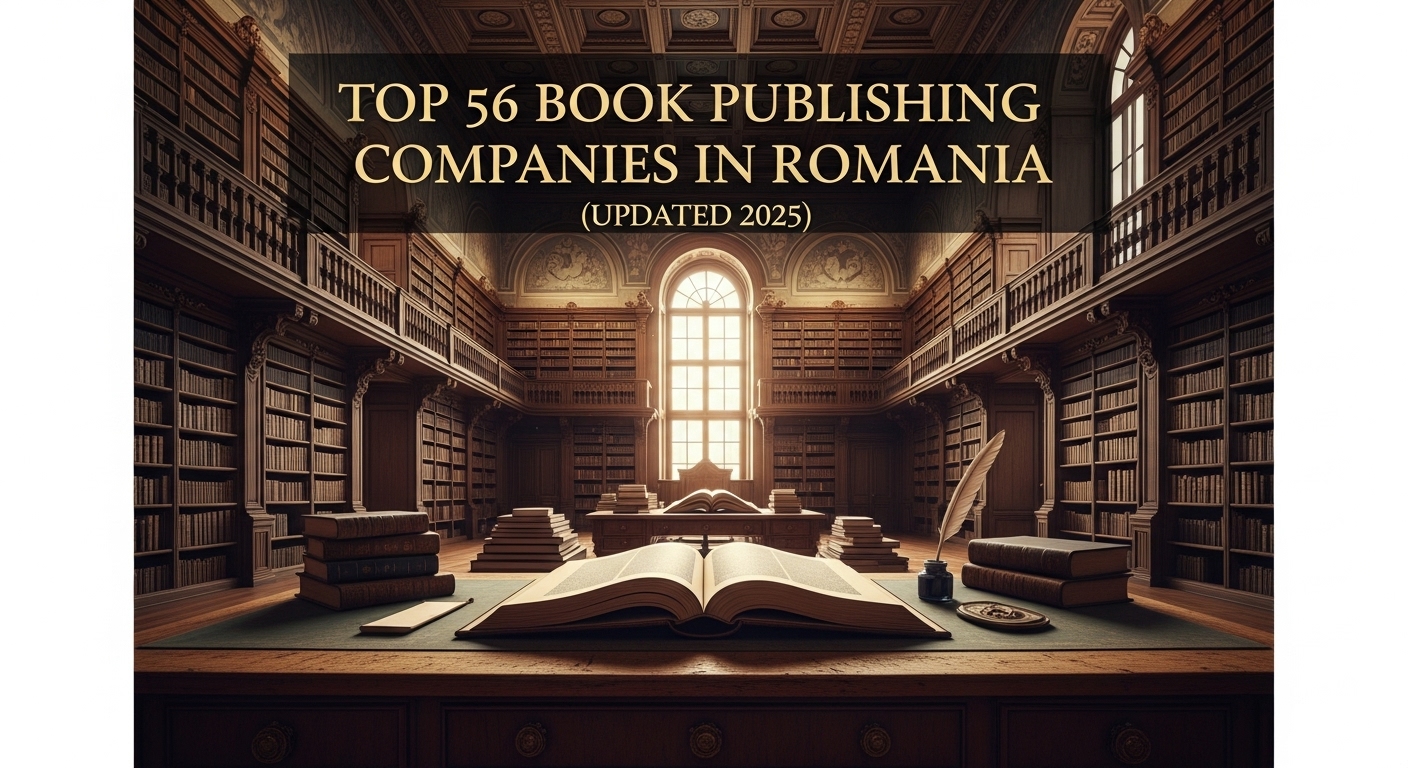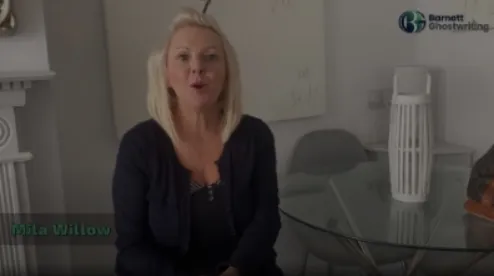
Romania’s book market is lively, genre-diverse, and increasingly open to new voices—from literary fiction and poetry to business, self-help, sci-fi, children’s picture books, and academic texts. Below is a carefully curated list of 56 notable book publishers operating in or serving readers of Romanian, followed by practical guidance on choosing the right house, understanding timelines and typical costs, and preparing a strong submission in 2025.
1) Barnett Ghostwriting
A full-service, author-first partner that helps writers shape market-ready manuscripts—from concepting and ghostwriting to editing, design, and launch strategy. Ideal for entrepreneurs, experts, and busy storytellers who need end-to-end support with professional polish and a clear publishing plan.
- Best for: Thought-leadership nonfiction, business, memoir, commercial fiction with strong hooks.
- Strengths: Dedicated editorial teams, brand positioning, retailer-ready production assets, campaign guidance.
2) Humanitas
A cornerstone of Romanian letters, known for literary fiction, philosophy, history, and essays. Humanitas champions distinguished Romanian voices and high-caliber translations, often tied to festivals and cultural debates.
3) Polirom
A powerhouse for contemporary fiction, social sciences, and robust translation programs. Polirom combines mainstream reach with editorial rigor and long-tail backlist attention.
4) Curtea Veche Publishing
Strong in history, memoir, lifestyle, and public-intellectual nonfiction. Curtea Veche cultivates books that spark conversation and media interest.
5) Nemira
A leading home for speculative fiction—sci-fi, fantasy, and thrillers—alongside contemporary titles. Revered by genre fans and growing crossover readerships.
6) Editura Trei
Excels in psychology, psychotherapy, and social science, plus popular fiction under multiple imprints. A go-to for evidence-driven nonfiction with broad appeal.
7) Litera
A major commercial player with wide lists: fiction, nonfiction, children’s, and practical guides. Known for accessible design, strong displays, and heavy distribution.
8) Grupul Editorial Corint
Well-balanced history, education, reference, and fiction. Corint nurtures lists that serve schools as well as general readers.
9) Editura ART
A design-forward house delivering literary fiction, translated gems, and standout YA via imprints. ART’s curatorial eye and production values attract discerning readers.
10) Humanitas Fiction
The fiction-focused arm of Humanitas, with prestige translations and prize-aligned authors—ideal for literary and crossover fiction.
11) Arthur (imprint of ART)
Top-tier children’s and middle-grade list—picture books, chapter books, and award-friendly series with strong classroom appeal.
12) Nemi (imprint of Nemira)
Vibrant children’s/YA imprint blending whimsy with smart storytelling and memorable art.
13) Pandora M (imprint of Trei)
Urban, contemporary, and stylish fiction and nonfiction that resonates with younger adult demographics.
14) RAO
Longstanding publisher across commercial fiction, thrillers, and popular nonfiction—well positioned in mass-market channels.
15) Editura ALL
Wide footprint in practical nonfiction, health, general interest, and children’s; strong in series publishing.
16) Paralela 45
Respected for education, literary works, and Romanian authors; bridges classroom and culture.
17) Publica
Sharp, modern business, economics, tech, and ideas—perfect for experts, founders, and policy-curious readers.
18) Herald
A specialist in spirituality, philosophy, and classic thought, presenting timeless works with care.
19) Vellant
Indie-minded, design-sophisticated lists across art, essays, and distinctive fiction; collectible aesthetics.
20) Univers
Veteran house known for literary translation and Romanian fiction, with an enduring cultural footprint.
21) Univers Enciclopedic
Breadth across reference, children’s, and general nonfiction, emphasizing clarity and utility.
22) Minerva
Historic imprint focusing on classics, heritage, and educationally aligned literature.
23) Niculescu
Strong in foreign languages, dictionaries, and educational resources—useful for academic and professional markets.
24) Gama Publishing
A favorite for children’s educational and activity books, phonics, and early-reader development.
25) Didactica Publishing House (DPH)
Teacher-friendly pedagogical resources, picture books, and classroom tools, prized by educators.
26) Tritonic
Champion of crime, thriller, and mystery, also supportive of genre communities and festivals.
27) Junimea
Iași-based cultural presence with literary prose, poetry, and essays, steeped in tradition.
28) Institutul European (Iași)
Academic and humanities-focused essays, history, and social sciences, bridging scholarship and public discourse.
29) Cartea Românească (imprint)
One of the country’s emblematic literary labels, home to serious fiction and poetry lists across eras.
30) Eikon
Independent taste-maker for humanities, sociology, and essayistic nonfiction with intellectual heft.
31) Vremea
Esteemed for history, biography, and cultural memory, often featuring archival gems.
32) Meteor Press
Accessible popular nonfiction, true crime, and practical guides with a commercial sensibility.
33) For You
Focused on self-development, spirituality, and holistic well-being, with loyal communities.
34) Booklet
Education-oriented workbooks and language resources, supporting students and teachers.
35) Editura Casa (Oradea)
Beloved for DIY, crafts, home, and design titles—strong visual production.
36) Grafoart
Visual-culture specialist covering art, architecture, and heritage, collectible editions.
37) Hyperliteratura
Indie energy fueling contemporary fiction, essays, and experimental projects with engaged readerships.
38) Fractalia
Home of avant-garde poetry, theory, and innovative prose, pushing formal boundaries.
39) Black Button Books
Curated contemporary voices, feminist perspectives, and bold translations, aesthetically sharp.
40) Tact (Cluj)
Philosophy, social theory, and critical humanities, with strong academic collaborations.
41) Școala Ardeleană (Cluj)
Regional-rooted press with history, memoir, and literature highlighting Transylvanian culture.
42) Tracus Arte
Poetry and literary prose with festival presence and contemporary poetics.
43) Crime Scene Press
Laser-focused on crime and mystery, nurturing a niche but dedicated fanbase.
44) Aramis
Children’s and educational picture books, early readers, and school-aligned series.
45) Integral
Commercial nonfiction, lifestyle, and translations, agile in trend-driven segments.
46) C.H. Beck (RO)
Authoritative legal and professional publications; essential for practitioners and students.
47) Hamangiu
Another pillar in Romanian legal publishing—codes, commentaries, and case law.
48) University of Bucharest Press
Academic monographs, conference proceedings, and specialist scholarly series.
49) Alexandru Ioan Cuza University Press (Iași)
Respected humanities and social science output with regional strengths.
50) Armada (imprint of Nemira)
Nemira’s modern sci-fi & fantasy spearhead—smart, cinematic, and collector-friendly.
51) Humanitas Junior (imprint)
Humanitas for young readers: illustrated nonfiction, classics for kids, and school picks.
52) Corint Junior (imprint)
Youth-focused adventures, learning, and series that keep kids turning pages.
53) Cartea Copiilor
Beloved independent picture-book specialist with award-caliber illustration.
54) Fiction Connection (imprint of Trei)
Page-turning commercial and crossover fiction with high readability.
55) Paideia
Cultural essays, philosophy, and heritage-minded nonfiction with thoughtful production.
56) Nautilus (classic SFF label at Nemira)
A storied science-fiction banner, curating foundational and new voices for genre fans.
How Romanian Publishing Works in Brief
- Traditional publishing generally covers editing, design, printing, distribution, and marketing in exchange for rights and royalties (often on net receipts).
- Hybrid/assisted publishing blends professional production with author investment, offering faster timelines and broader creative control.
- Self-publishing services (often via local providers or EU printers) suit authors who want full control and higher per-book margins—while accepting full marketing responsibility.
Submission Basics (Quick Wins)
- Query letter: One page. Logline, hook, word count, target readers, and why this house.
- Synopsis: 1–2 pages, clear arc (for nonfiction: a chapter-by-chapter outline).
- Sample: 1–3 chapters (fiction) or 1 sample chapter + detailed TOC (nonfiction).
- Platform: Briefly note awards, media, speaking, newsletter, or community reach.
- Language & translation: If your manuscript is not in Romanian, ask whether the house commissions translations.
How to Choose the Right Romanian Publisher (Step-by-Step)
- Match list to manuscript. Identify 5–8 houses whose catalogs mirror your tone and category (e.g., literary, business, SFF, children’s).
- Check the submission window. Some accept year-round queries; others read only in set periods or by referral.
- Study their recent books. Align your comp titles with Romanian-market comparables published within the last 2–3 years.
- Decide your route. If you want a fast path and more control, consider hybrid support or a service partner (like Barnett Ghostwriting) to refine the manuscript and proposal before pitching.
- Prepare the package. Tight query, tidy synopsis, polished sample. If applicable, include a short marketing plan (events, podcasts, newsletter, social reach).
- Stage your submissions. Send to 3–4 priority targets. Iterate based on feedback, then expand to the next tier.
- Assess the deal. Beyond advance/royalties, look at editorial depth, print runs, distribution, reprint cadence, and backlist care.
Manuscript & Marketing Essentials (2025)
- Editing matters: Invest in professional developmental + line editing before querying; acceptance odds rise when your pages are clean.
- Design sells: For children’s and practical nonfiction, cover clarity and interior readability drive adoption.
- Discoverability: Romania’s readers respond to festival appearances, podcast interviews, school visits, and media essays; include these ideas in your proposal.
- Formats: Consider paperback + eBook from day one; explore audiobooks for business, self-help, and narrative nonfiction.
Frequently Asked Questions
Q1: Can I submit in English?
Some houses consider English submissions if the book is slated for translation; however, Romanian manuscripts remain the most straightforward path. Always check guidelines.
Q2: How long should I wait before following up?
Typically 8–12 weeks. If you have competing interest, it’s fine to notify politely.
Q3: Do I need an agent in Romania?
Helpful but not mandatory. Many Romanian houses are open to direct submissions—clear proposals and polished pages are your best leverage.
Q4: What print run should I expect?
For debuts, 1,000–3,000 copies is common (genre and season dependent). Strong early demand triggers reprints quickly.
Q5: What if I want speed and control?
Explore hybrid/assisted routes or work with end-to-end partners (like Barnett Ghostwriting) to accelerate timelines while maintaining quality.
Closing Thoughts
Romania’s 2025 publishing scene blends heritage with experimentation: major cultural houses coexist with nimble indies and focused imprints that cultivate devoted readerships. Whether you’re querying Humanitas or Polirom with a literary tour-de-force, pitching Nemira’s Armada for a high-concept sci-fi saga, or partnering with Barnett Ghostwriting to shape a business book with real commercial legs, the path is there—provided your pages shine, your pitch is crisp, and your audience is clearly in sight.





